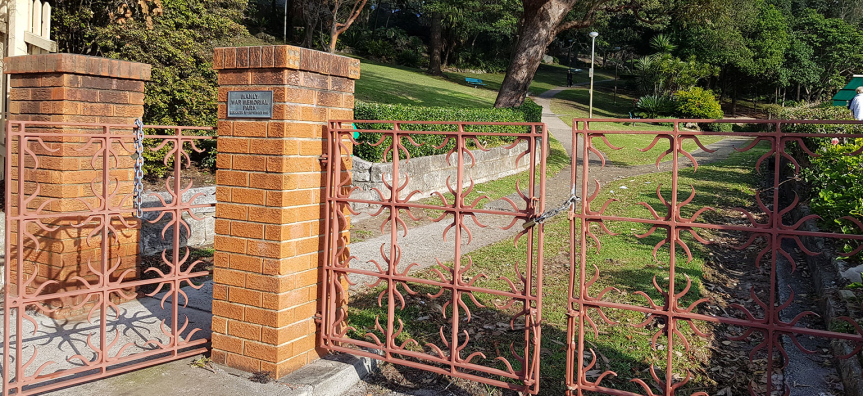
Ivanhoe Park covers 4.53 hectares. The site is divided into two distinct cultural and landscaped areas. Ivanhoe Park Botanic Garden (western side of the park) provides a traditional parkland and gardens. A ‘village green’ (eastern side of the park) comprises the oval, tennis courts and bowling greens. Along the northern edge of the park there is a former tramway corridor. This webpage focuses on the botanic garden.
Community’s vision
Ivanhoe Park will be a welcoming destination for community enjoyment, celebrating its unique heritage, environment, sport and recreation. A well-maintained place of sanctuary, reflection and learning, close to the heart of Manly.
Heritage
Ivanhoe Park was listed on the State Heritage Register on 19 August 2019 (published 23 August 2019). The site is recognised for its cultural heritage and long record of significant recreational use. For more information visit the State Heritage Register.
Ivanhoe Park Botanic Garden and the tram loop are heritage listed in the Manly LEP 2014, Schedule 5. The heritage character of Ivanhoe Park is complemented by a number of heritage listed houses and trees in Raglan Street and Sydney Road.
History
The Kay-ye-mai people, cared for the land until the late 1800s, when the site assumed its ‘gardenesque pleasure ground’ character.
The site was initially called Manly Park. It was held in private ownership and used for recreation and events by the public who generally paid for the privilege. During these years it contained a large pavilion that was used for dances and events, and a hotel – the Ivanhoe Park Hotel (not to be confused with the current Ivanhoe Hotel at the Corso). The Council operated from the hotel building at Ivanhoe Park until 1909.
The site was purchased by Manly Council in 1883, and then sold to the state government who handed control over to the Council in 1887. During the 1880s and 1890s, the Manly Wildflower Shows were held at the pavilion in the park. The pavilion was demolished in 1893.
Some of the sandstone areas were quarried in the 1890s and drainage works were undertaken.
Part of the site was allocated for The Spit to Manly tram route in 1910 (completed in 1911). The first tram travelled along Sydney Road via a horseshoe curve between Crescent and George streets, skirting the western and northern boundaries of Ivanhoe Park before reaching level terrain in Raglan Street. The last trams ran in 1939. Although the tracks were removed, a portion of the tramway loop is still visible.
The War Memorial was dedicated on 30 October 1953 to those who had fought and fallen in the Second World War.
In 1962 the council approved a £50,000 redevelopment at the oval, including a building for the Girl Guides (since demolished).
The reserve at the western end of the park was renamed Ivanhoe Park Botanic Garden in 2006, after being approved by the Geographical Names Board.
Plans for the Garden
Plans for the Garden are available from our Yoursay page. This includes:
- Ivanhoe Park Landscape Masterplan
- Ivanhoe Park Plan of Management
- Ivanhoe Park Conservation Management Plan
Friends of Ivanhoe Park Botanic Garden Inc.
The Friends group formed in 2018. Their philosophy is that:
The Garden will be an inspiring and sustainable iconic landscape that provides diverse opportunities for learning about plants, horticulture, landscapes, botany, ecology, conservation, and heritage. It will be a place for the enjoyment of the whole community creating a ‘sense of place’ located in the heart of Manly.
The Friends group organise meetings with guest speakers, events, raise funds and engage in volunteer gardening. Joining the Friends group is a wonderful way to enjoy being part of the local community and make new friends. Members are welcome to do as little or as much as they wish.
Visitors can access the Garden via ferry (available from Circular Quay), or buses stop adjacent to Gilbert Park.
Parking Information
Limited parking is available in Raglan Street and surrounds.
